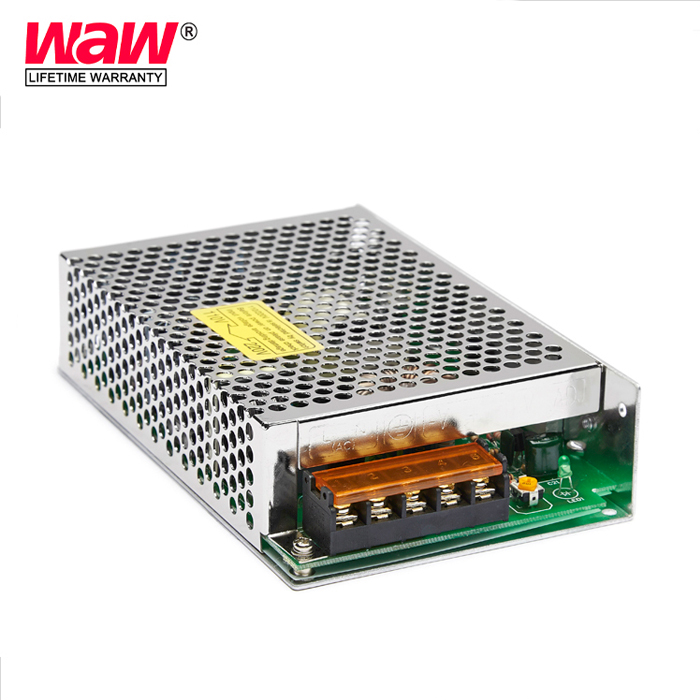
Wenzhou wode electrical co.,LTD
Tel: +86 577 62602806Phone: 86-18106781616E-mail: wode@wodeps.com

Tel: +86 577 62602806Phone: 86-18106781616E-mail: wode@wodeps.com

Date:2021.01.26 Views:3661
Let's briefly explain the working principle of switching power supply: the circuit consists of a switch (in the actual circuit, a triode or a field-effect tube), a current-continuing diode, an energy-storing inductor, a filter capacitor and so on.
When the switch is closed, the power supply is supplied to the load through the switch and inductor, and some of the electrical energy is stored in the inductor as well as the capacitor. Due to the self-inductance of the inductor, after the switch is turned on, the current increases slowly, i.e., the output does not immediately reach the supply voltage value.
After a certain period of time, the switch is disconnected, and due to the self-inductance of the inductor (which can be thought of more graphically as the inertia of the current in the inductor), the current in the circuit will be kept constant, i.e., it will continue to flow from left to right. This current flows through the load, returns from the ground, flows to the positive terminal of the renewal diode, passes through the diode, and returns to the left end of the inductor, thus forming a circuit.
The output voltage can be controlled by controlling the timing of the switch closing and breaking (i.e. PWM - Pulse Width Modulation). If the output voltage is detected to control the on and off time to keep the output voltage constant, this achieves the purpose of voltage regulation.

Ordinary power supply and switching power supply are the same is that there are voltage regulator tube, using the principle of feedback to regulate the voltage, the difference is that the switching power supply using switching tubes for adjustment, ordinary power supply is generally used to adjust the linear amplification area of the triode. In comparison, the switching power supply has low energy consumption, a wide range of AC voltage, the output DC ripple coefficient is better, the disadvantage is the switching pulse interference.
The main working principle of ordinary half-bridge switching power supply is that the switching tubes of the upper bridge and lower bridge (VMOS at high frequency) are conducted in turn. Firstly, the current flows in through the upper bridge switching tubes, using the storage function of the inductor coils to collect the electrical energy in the coils, and finally closing the upper bridge switching tubes and opening the switching tubes of the lower bridge, the inductor coils and capacitors continuously supply power to the external. Then close the lower bridge switch tube again, and then open the upper bridge to let the current into, and so on repeatedly, because to take turns to switch the two switch tubes, so called switching power supply.
The linear power supply is different, because there is no switch intervention, so that the upper pipe has been in the discharge, if there is more, it will leak out, which is what we often see in some linear power supply adjustment tube heat is very large, the power that can not be used, all converted into heat. From this point of view, the conversion efficiency of the linear power supply is very low, and the heat is high, the life of the components is bound to decline, affecting the final use of the effect.